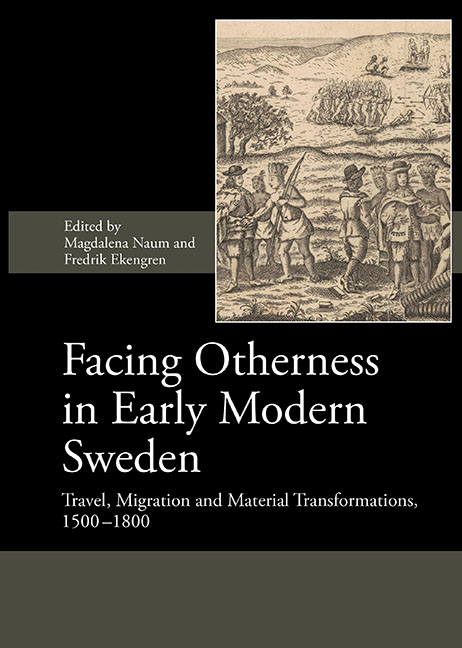Book contents
- Frontmatter
- Contents
- List of Illustrations
- List of Contributors
- Preface
- List of Abbreviations
- I Material Transformations
- II Migration and Neighbourly Interactions
- III Overseas Travel
- Introduction
- 13 “How It Would Be to Walk On the New World with Feet from the Old”: Facing Otherness in Colonial America
- 14 Inscribing Indigeneity in the Colonial Landscape of New Sweden, 1638–1655
- 15 Men You Can Trust? Intercultural Trust and Masculinity in the Eyes of Swedes in 18th-Century Canton
- 16 The Barbary Coast and Ottoman Slavery in the Swedish Early Modern Imagination
- 17 A World of Distinctions: Pehr Löfling and the Meaning of Difference
- IV Conclusions
- Index
13 - “How It Would Be to Walk On the New World with Feet from the Old”: Facing Otherness in Colonial America
from III - Overseas Travel
Published online by Cambridge University Press: 23 July 2019
- Frontmatter
- Contents
- List of Illustrations
- List of Contributors
- Preface
- List of Abbreviations
- I Material Transformations
- II Migration and Neighbourly Interactions
- III Overseas Travel
- Introduction
- 13 “How It Would Be to Walk On the New World with Feet from the Old”: Facing Otherness in Colonial America
- 14 Inscribing Indigeneity in the Colonial Landscape of New Sweden, 1638–1655
- 15 Men You Can Trust? Intercultural Trust and Masculinity in the Eyes of Swedes in 18th-Century Canton
- 16 The Barbary Coast and Ottoman Slavery in the Swedish Early Modern Imagination
- 17 A World of Distinctions: Pehr Löfling and the Meaning of Difference
- IV Conclusions
- Index
Summary
To prospective emigrants and to the newcomers in New Sweden, America appeared as a strange and ambiguous place – wild and dangerous yet beautiful and bountiful. The settlers tried to overcome the “otherness” they encountered, of the landscape, people and culture, through the strategies of domestication and “translation”. However, the many aspects of otherness faced in colonial America affected the everyday behaviour of the Swedish-speaking population. These contradictory forces were reflected in material culture and material decisions of the colonists. Drawing upon historical and archaeological sources, this chapter explores these complex engagements with old traditions and new cultural elements in the multicultural settings of New Sweden.
IMAGINING AMERICA
In the early decades of the 17th century, when the idea of the Swedish colony of New Sweden was conceived and realized, America had a vague place in popular consciousness. Knowledge of the new continent was rather limited, and early Swedish images of it were influenced by tales told by foreign travellers and sailors, by pictorial representations in prints and maps, and by news and reports published in foreign and domestic newspapers and broadsheets. These diverse accounts mixed fact with fiction and presented the continent as a confusing place.
America was often judged to be the materialization of a biblical paradise, a land of plenty promising quick and substantial profits. Such a version of the continent was presented by Willem Usselincx in his 1624 negotiations with Gustavus Adolphus to establish a Swedish colonial trading company, and promoted by Johan Risingh, New Sweden's last governor. The potential of the New World and benefits of a colonial venture were painted with broad strokes as an answer to the aspirations of the ambitious Swedish kingdom. Usselincx and Risingh argued, for example, that the New World and trans-oceanic connections were the major source of wealth of the Dutch Republic and Spain, and Sweden should follow the colonial path to enhance its economy, political status and culture. The perception of America as a seemingly boundless source for quenching European appetites and desires was also fuelled by reports of the legendary riches of the Spanish treasure fleet that occasionally appeared in Ordinari Post Tijdender (“Regular Mail Times”), founded in 1645.
- Type
- Chapter
- Information
- Facing Otherness in Early Modern SwedenTravel, Migration and Material Transformations 1500–1800, pp. 243 - 260Publisher: Boydell & BrewerPrint publication year: 2018

